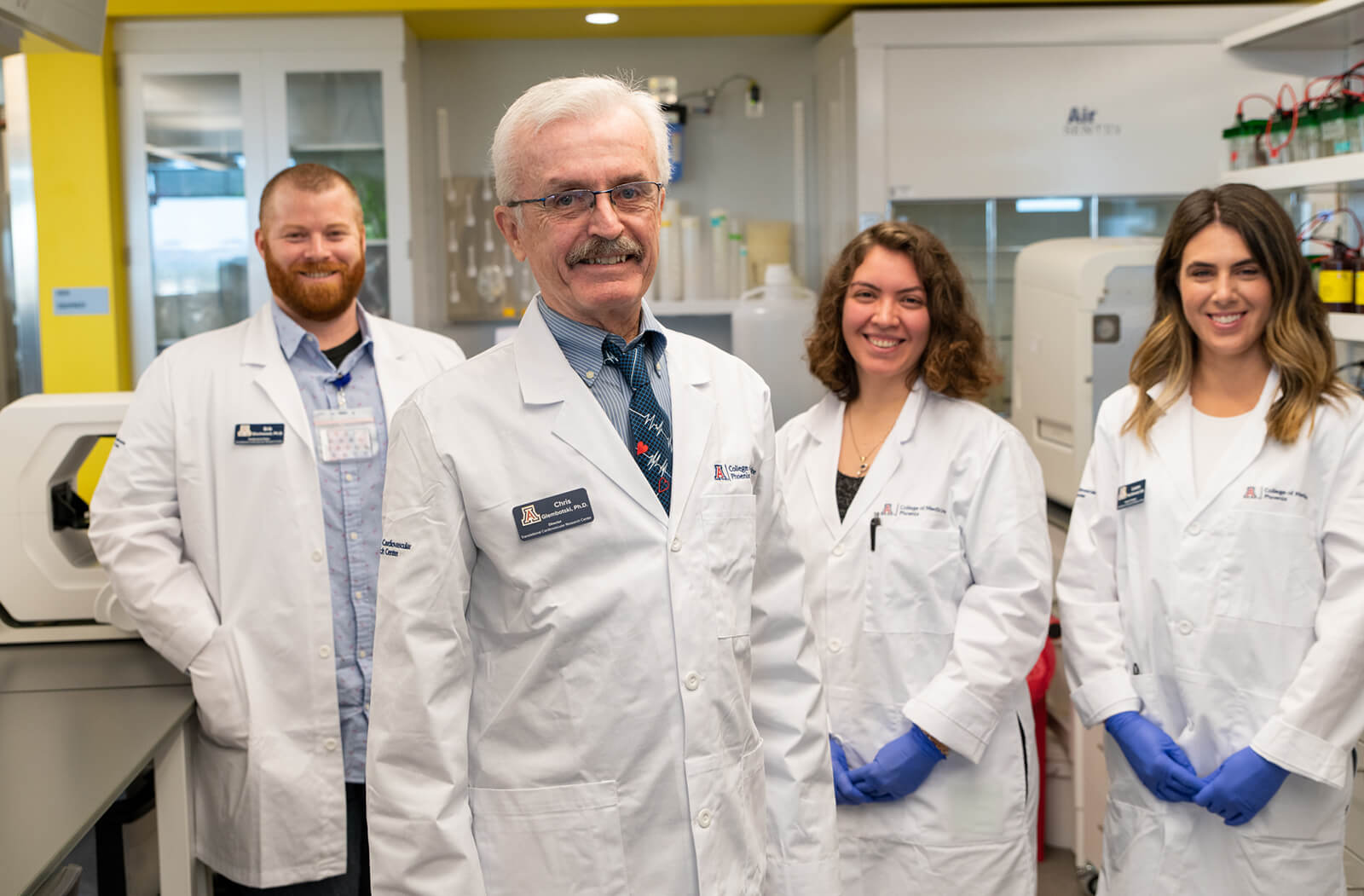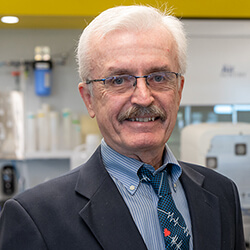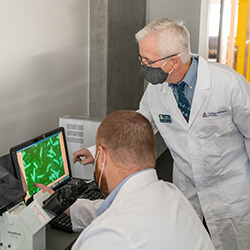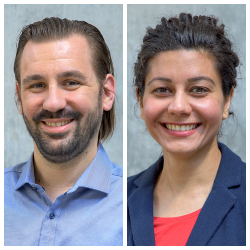
A Novel Molecular First Responder Could Improve Patient Outcomes after Heart Attack or Stroke

Imagine if EMTs could give a loved one a drug onsite to immediately reduce the severity of a heart attack or stroke?

“We found compounds that we could someday make into drugs. When we mimic a heart attack in the laboratory, the compounds basically mitigate all the damage of a heart attack,” said Dr. Glembotski — inaugural director of the Translational Cardiovascular Research Center (TCRC). He also serves as the associate dean for Research and as a professor in the Department of Internal Medicine.
Cardiovascular diseases, such as hypertension, coronary artery disease and heart attack, may increase the risk of stroke. Plaque buildup in the arteries caused by the disease can block the flow of oxygenated blood to the brain, resulting in stroke and potential brain damage. Heart disease is the No. 1 killer of Americans, according to the American Heart Association.
What makes Compound 147 an effective treatment is the presence of its partner protein, ATF6, in every cell and organ of the body. When the protein is activated, it stops all stress reactions, preventing further damage.

“This is powerful and would be the kind of drug you might get if you suffer a heart attack or after experiencing a stroke. It will reduce the damage to your heart; then your heart function will be much better, right away,” he said.
Dr. Glembotski has been at the University of Arizona College of Medicine – Phoenix for only about a year, having moved from San Diego State University (SDSU) — where he was director of the SDSU Heart Institute. Since moving to Phoenix, he has focused his attention on supporting faculty, postdocs, research staff, graduate students and research office initiatives in translational neurosciences, cancer and cardiovascular disease. He has also dedicated himself to increasing the awareness of the TCRC. In collaboration with Banner – University Medical Center Phoenix, basic science and clinical cardiovascular researchers at the college are working on significant research projects to advance the understanding and treatment of a wide range of diseases, in addition to heart disease.

In support of these efforts, the TCRC has acquired numerous state-of-the-art research instruments, including a super high-resolution confocal microscopy system. The system has unprecedented imaging capacity, enabling scientists to better examine specimens and interpret data. Soon, they will add a cluster of computational servers that will be used to support translational research studies. Instruments like these will expand the team’s capabilities to model disease progression and optimize intervention strategies in a precision medicine-oriented, patient-specific manner.
The next phase of Compound 147 experiments will soon begin. The TCRC team will collaborate with peers at the Sarver Heart Center at the University of Arizona College of Medicine – Tucson, sharing technologies and research lab space.
“We anticipate that it will take about six to nine months to complete this next phase, and if we are successful, we will initiate clinical trials,” he said. “ATF6 has particularly beneficial effects in cells and tissues that are stressed, as happens during a heart attack or a stroke, so in a way, we consider ATF6 to be a molecular first responder,” said Dr. Glembotski.
About the College
Founded in 2007, the University of Arizona College of Medicine – Phoenix inspires and trains exemplary physicians, scientists and leaders to advance its core missions in education, research, clinical care and service to communities across Arizona. The college’s strength lies in our collaborations and partnerships with clinical affiliates, community organizations and industry sponsors. With our primary affiliate, Banner Health, we are recognized as the premier academic medical center in Phoenix. As an anchor institution of the Phoenix Bioscience Core, the college is home to signature research programs in neurosciences, cardiopulmonary diseases, immunology, informatics and metabolism. These focus areas uniquely position us to drive biomedical research and bolster economic development in the region.
As an urban institution with strong roots in rural and tribal health, the college has graduated more than 1,000 physicians and matriculates 130 students each year. Greater than 60% of matriculating students are from Arizona and many continue training at our GME sponsored residency programs, ultimately pursuing local academic and community-based opportunities. While our traditional four-year program continues to thrive, we will launch our recently approved accelerated three-year medical student curriculum with exclusive focus on primary care. This program is designed to further enhance workforce retention needs across Arizona.
The college has embarked on our strategic plan for 2025 to 2030. Learn more.